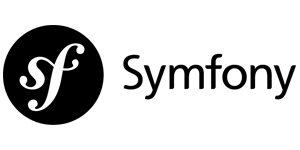-
Notifications
You must be signed in to change notification settings - Fork 99
Symfony Framework
Symfony is a set of reusable PHP components and a PHP framework to build web applications, APIs, microservices and web services.
This guide has been tested successfully in version 4.3, but I think it can be used older versions as well.
Symfony doesn't have a middleware concept, therefore you can create a parent controller to implement Shieldon Firewall just like the steps in our CodeIgniter guide.
If you don't like to initialize Shieldon Firewall in a parent controller, here are the steps that called Bootstrap mode you can try.
Use PHP Composer:
composer require shieldon/shieldon ^2This will also install dependencies built for Shieldon:
- shieldon/psr-http The PSR-7, 15, 17 Implementation with full documented and well tested.
- shieldon/event-dispatcher The simplest event dispatcher.
- shieldon/web-security The collection of functions about web security.
- shieldon/messenger The collection of modules of sending message to third-party API or service, such as Telegram, Line, RocketChat, Slack, SendGrid, MailGun and more...
In your config/bootstrap.php, after this line:
require dirname(__DIR__).'/vendor/autoload.php';Add the following code:
Example:
/*
|--------------------------------------------------------------------------
| Run The Shieldon Firewall
|--------------------------------------------------------------------------
|
| Shieldon Firewall will watch all HTTP requests coming to your website.
*/
if (isset($_SERVER['REQUEST_URI'])) {
// This directory must be writable.
$storage = __DIR__ . '/../storage/shieldon';
$firewall = new \Shieldon\Firewall\Firewall();
$firewall->configure($storage);
// The base url for the control panel.
$firewall->controlPanel('/firewall/panel/');
$response = $firewall->run();
if ($response->getStatusCode() !== 200) {
$httpResolver = new \Shieldon\Firewall\HttpResolver();
$httpResolver($response);
}
}Create a controller named FirewallPanelController by typing the following command.
Example:
php bin/console make:controller FirewallPanelControllerAdd several lines in the FirewallPanelController controller class:
Example:
$panel = new \Shieldon\Firewall\Panel();
$panel->entry();If you have CSRF enabled, add these lines:
Example:
$csrf = $this->container->get('security.csrf.token_manager');
$token = $csrf->refreshToken('key');The full example will look like this:
Example:
<?php
namespace App\Controller;
use Symfony\Bundle\FrameworkBundle\Controller\AbstractController;
use Symfony\Component\Routing\Annotation\Route;
class FirewallPanelController extends AbstractController
{
/**
* @Route("/firewall/panel/", name="firewall_panel")
*/
public function panel()
{
$panel = new \Shieldon\Firewall\Panel();
// If your have `symfony/security-csrf` installed.
$csrf = $this->container->get('security.csrf.token_manager');
$token = $csrf->refreshToken('key')->getValue();
$panel->csrf(['_token' => $token]);
$panel->entry();
exit;
}
/**
* @Route("/firewall/panel/{class}/{method}", name="firewall_panel_page")
*/
public function page()
{
$this->panel();
}
}That's it.
You can access the Firewall Panel by /firewall/panel, to see the page, go to this URL in your browser.
https://yourwebsite.com/firewall/panelThe default login is shieldon_user and password is shieldon_pass. After logging in the Firewall Panel, the first thing you need to do is to change the login and password.
Shieldon Firewall will start watching your website if it get enabled in Deamon setting section, make sure you have set up the settings correctly.if it get enabled in Deamon setting section, make sure you have set up the settings correctly.
- Author: Terry L. from Taiwan.
- Website: shieldon.io
- GitHub repository: github.com/terrylinooo/shieldon
- WordPress plugin: wordpress.org/plugins/wp-shieldon/
Docs: Laravel, Symfony, CodeIgniter, CakePHP, Yii, Zend, Slim, Fat-Free, Fuel, PHPixie


